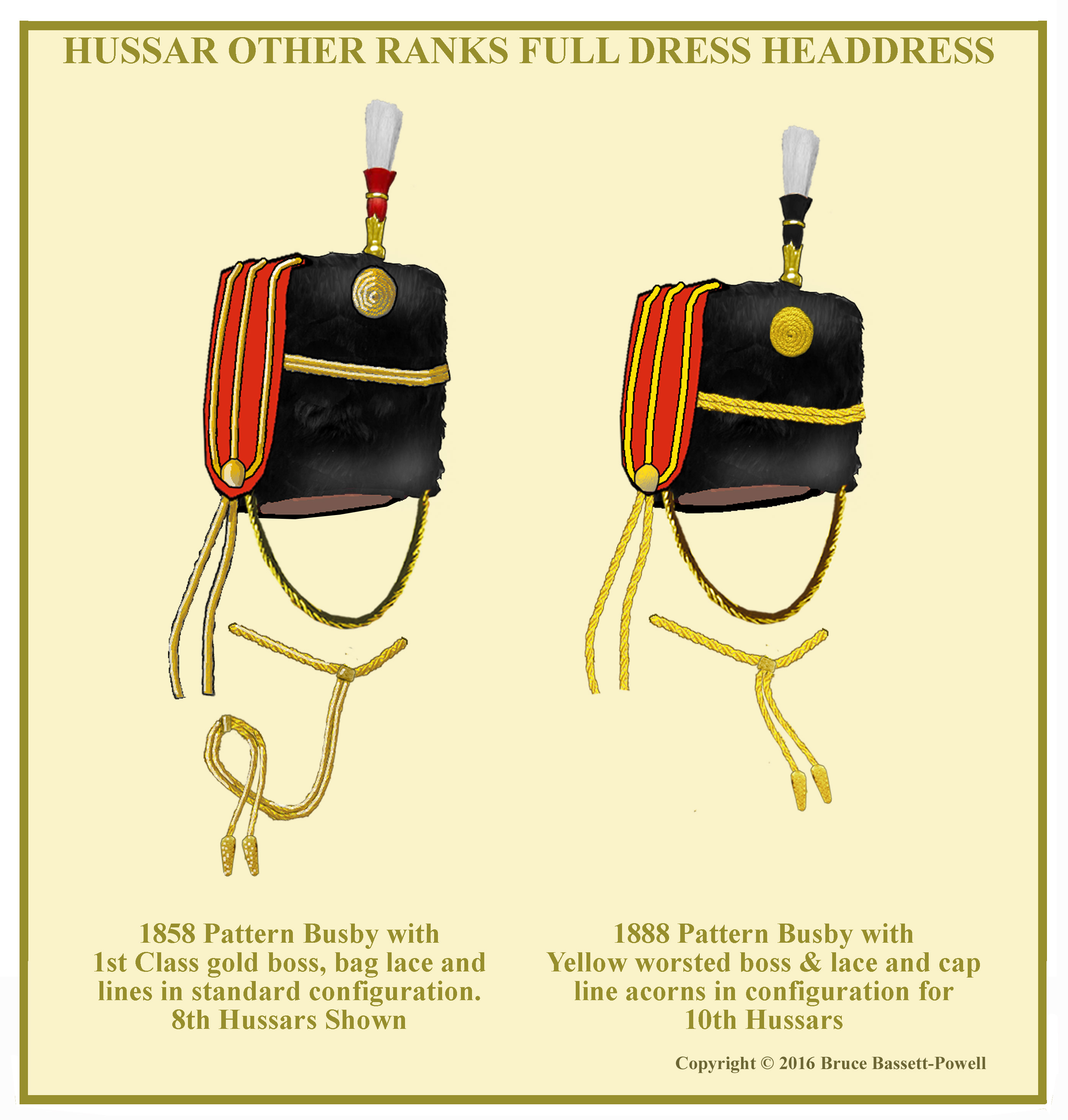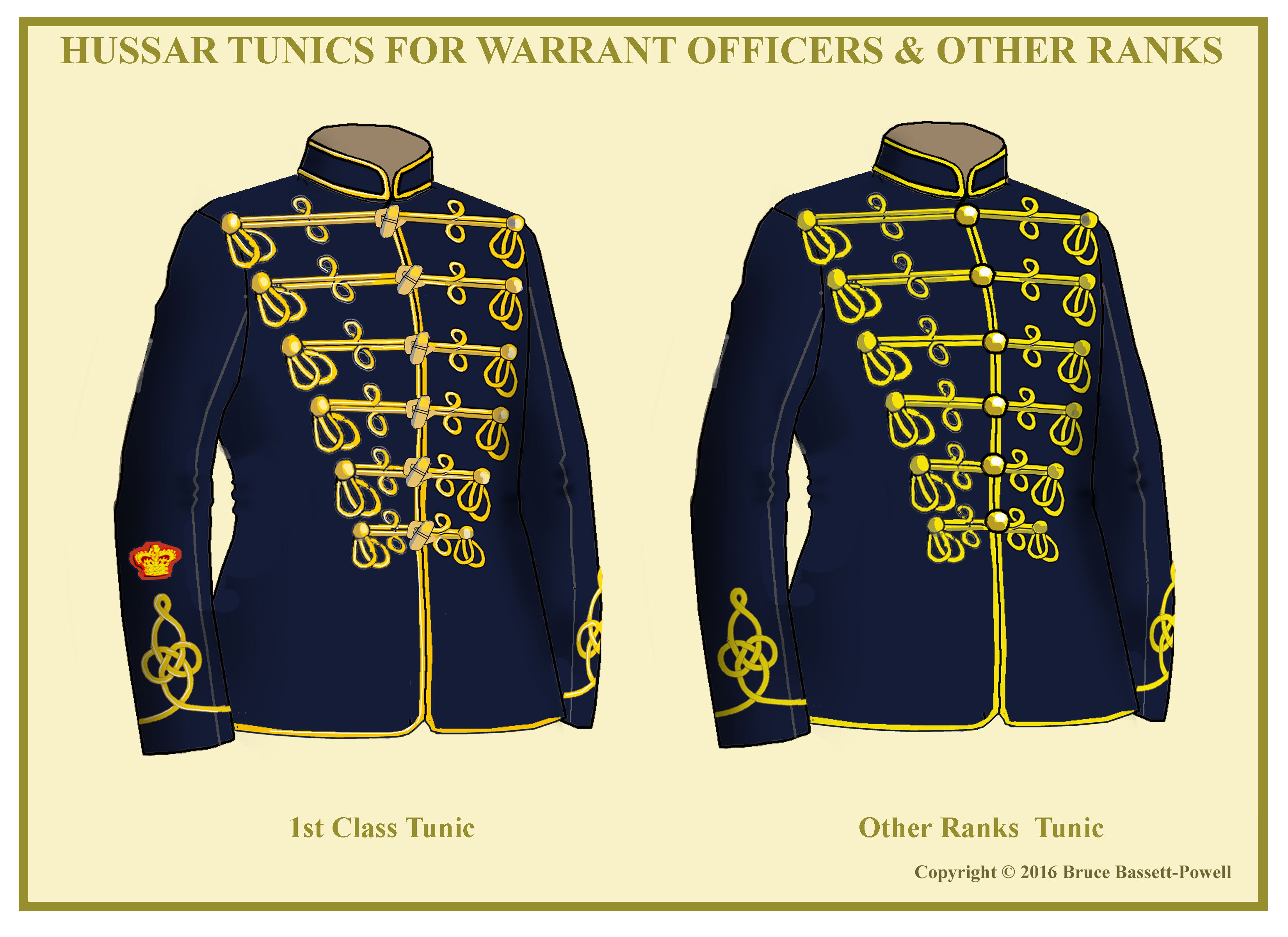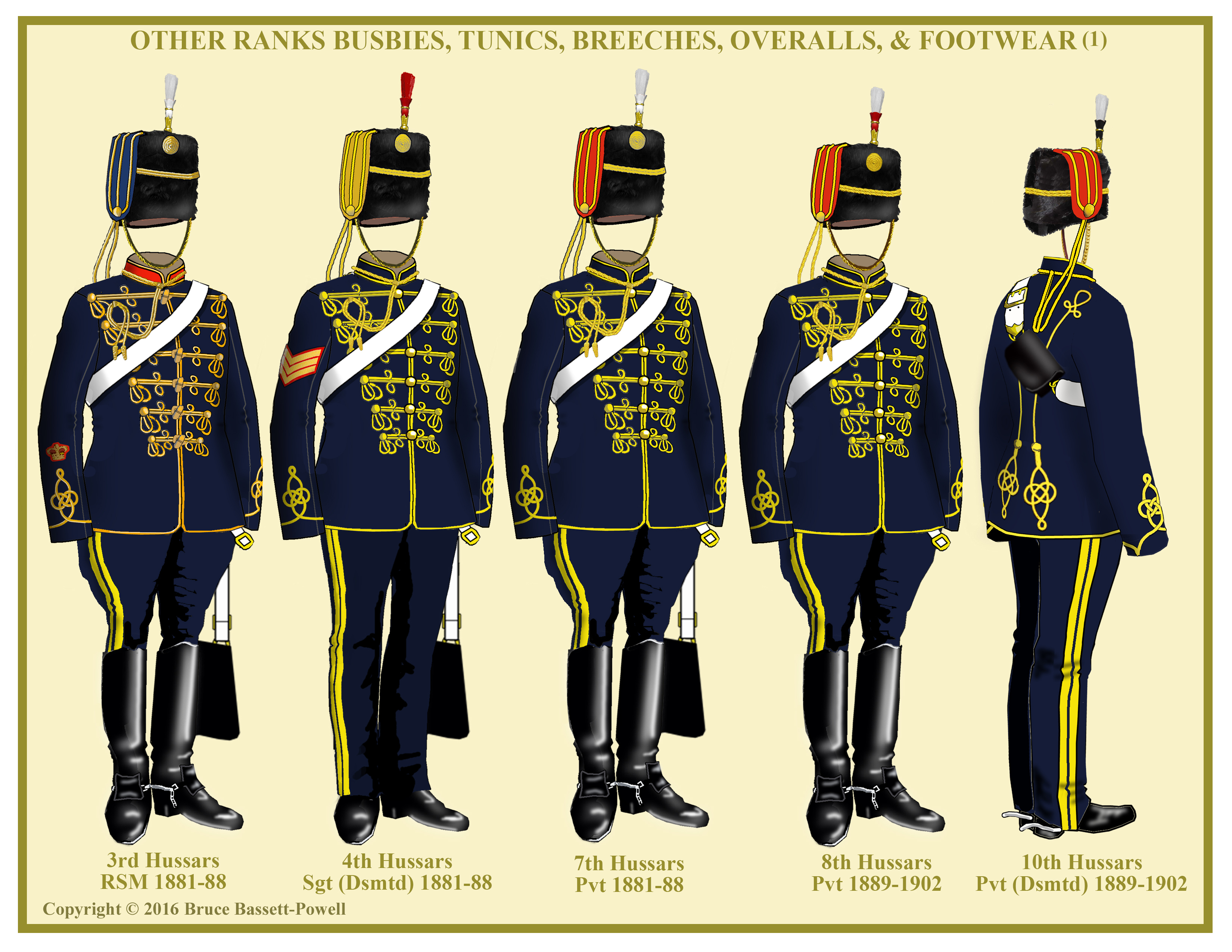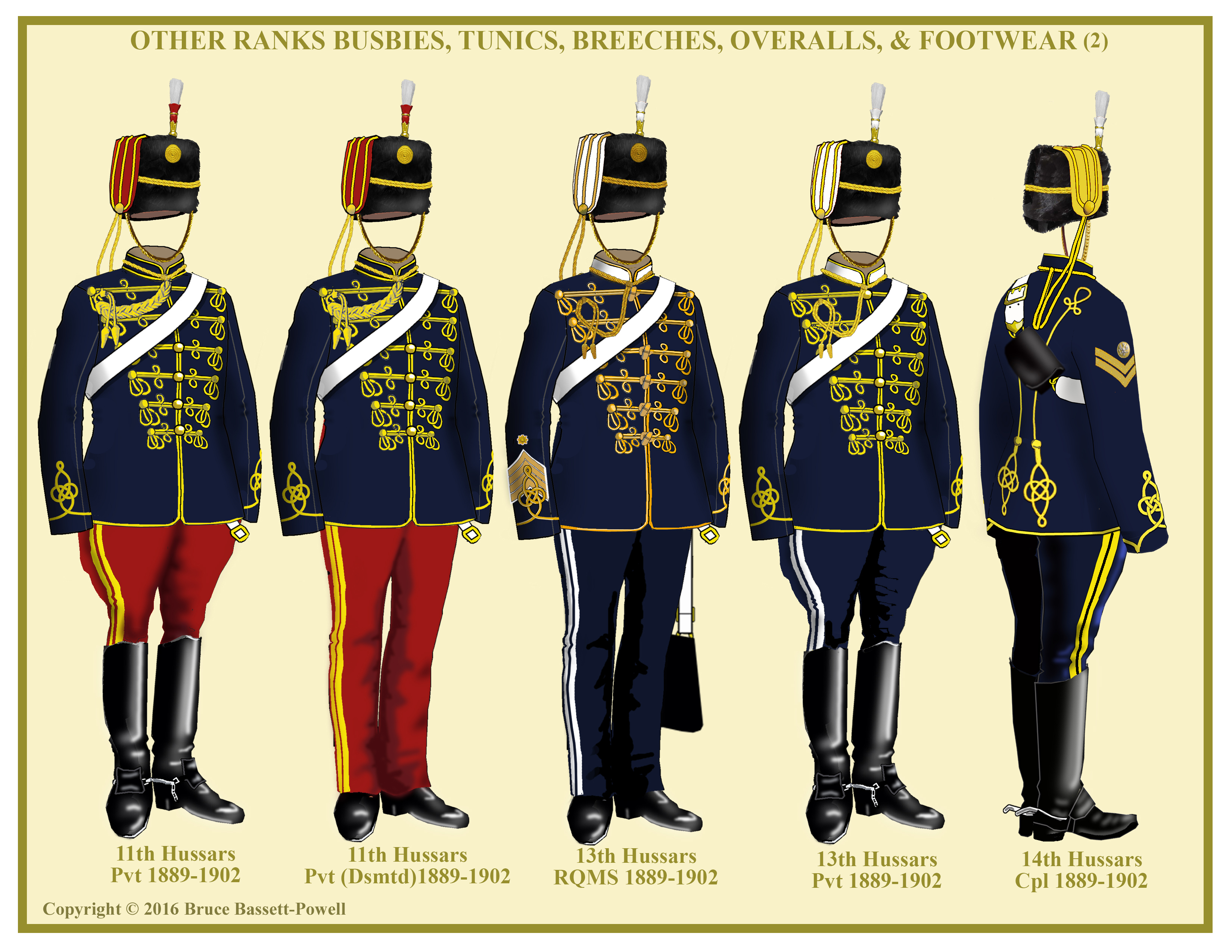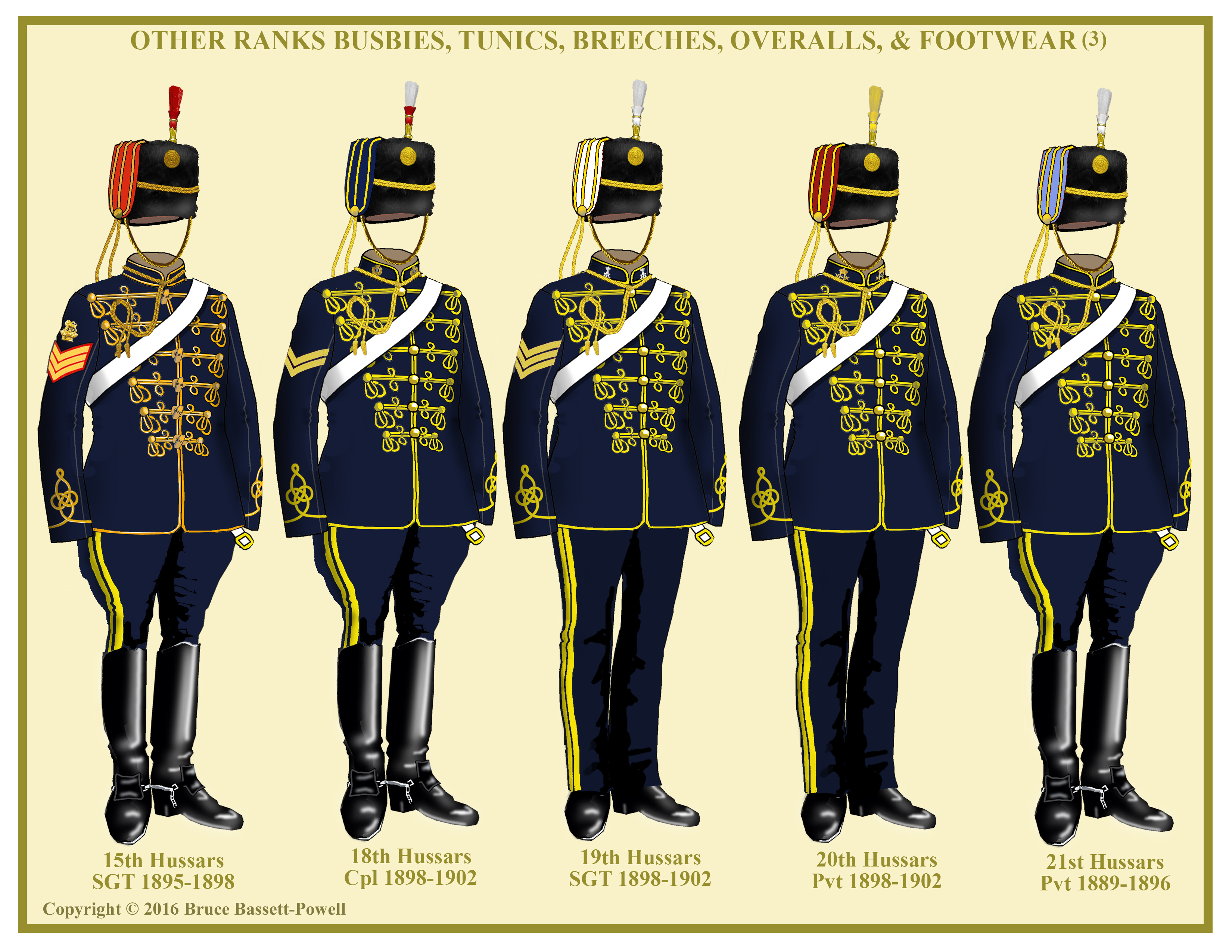UNIFORMS, ARMS & EQUIPMENT - HUSSARS
OTHER RANKS FULL DRESS UNIFORMS
Headdress
The style of other ranks busbies closely followed that of officers and the 1858 pattern busby was replaced with the shorter version in 1888. It is important to understand that whereas officers adopted the changes as soon as was conveniently possible, other ranks had to rely on issues from stores. Clothing regulations allowed for replacement headdresses every four years and one doubts the parsimonious clothing department would have rushed to do so immediately. This is why photographs of other ranks in the early1890s wearing the older pattern should come as no surprise. Also, regiments serving overseas may not have been issued with them until their return home.
Made of black beaver, the dimensions were similar to the officers – 6 1/4 inches in front and 7 ¾ inches in the rear. The appearance was of a smaller headdress because of the shorter fur. The caplines, bag lace and front boss were of yellow worsted cord. For senior ranks wearing the first class tunic (see below) the cords were of gold lace. The cap lines went twice around the body of the busby and for most regiments, went around the neck and looped up onto the right shoulder. In the 11th Hussars the lines ended in a plaited loop from the collar and the 10th Hussars had short ends where the acorns did not loop up to the shoulder. The plume was of horsehair brush in a brass holder. The colours of busby bags and plumes were the same as for officers.
TUNICS
Since the mid-1870s, the regimental Sergeant-Major wore the same tunic, but with gold lace instead of yellow and fastening with gold toggles. In 1881 the ranks of senior NCOs were re-designated as Staff Sergeants 1st Class, Staff Sergeants 2nd Class and Sergeants. (The term Warrant Officer at this time, only applied to Conductors of supplies and stores). Initially, Staff Sergeants 1st class only applied to the Regimental Sergeant-Major and Quartermaster but later included the bandmaster. These 1st Class Staff Sergeants were authorised to wear what was known as a First Class gold laced tunic. Many accounts suggest sergeants could also wear the 1st class tunic but they were not authorised to do so. When Troop Sergeant-Majors (of the 2nd class) were elevated to Squadron Sergeant-Majors in the 1890s, they appear to have adopted the 1st class tunic as well.
The tunic was the same as that authorised in 1874 and remained the same throughout the period. The garment was of blue cloth with no facings except for the 3rd Hussars who had scarlet collars and the 13th Hussars who had buff (actually white) collars. The collar front and skirts were edged all round in yellow worsted cord. There were six loops of the same cord doubled across the front of the chest narrowing in length from the shoulder to the waist. On each side in the centre, the cord was looped into an eye above and below and the cords terminated in drops and caps. The tunic was fastened by six brass ball buttons.
So much for the regulations. Photographs and contemporary narratives tell a somewhat different story. It appears commanding officers had some say in who wore what and there is plenty of evidence that the 1st class tunic was worn by some sergeants in some regiments, especially after 1890. The 15th Hussars is a great example where a sergeant of the regiment in 1891 is shown in a regular tunic, another is shown in 1896 is in a 1st Class tunic.
Another example of how the reality differed from the accepted norm is the 19th Hussars. Photographs of the regiment between 1881 and 1890 show them wearing a tunic where the eyes on the chest loops are only about an inch from the caps on each side. They are also much larger than on the regular tunic. Possibly locally made when overseas? That is unknown but certainly by the mid-1890s they were wearing the regular tunic.
Pantaloons (breeches) and overalls were of standard cavalry pattern. The 11th Hussars had crimson ones and the 13th had double white stripes instead of yellow. A plain black leather sabretache, which hung by two straps from the waist-belt had been worn by all ranks until 1888. In that year, the sword, when soldiers were mounted, was now attached to a frog on the saddle and sabretaches were discontinued for all ranks below sergeant. Within a few years, for practical reasons, the sabretache was to be worn only in dismounted order. By the end of the century it was worn only by Sergeants 1st Class (RSM, RQMS etc)



